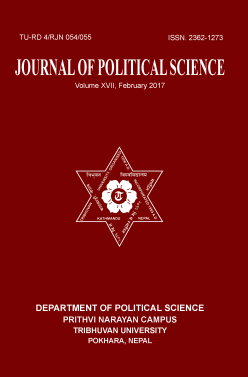The Constitution of Nepal: On the Touchstone of Constitutionalism and Good Governance
DOI:
https://doi.org/10.3126/jps.v17i0.20512Keywords:
Constitution, Constitutionalism, Democracy, Good governance, Power, RuleAbstract
Various types of constitutions can be seen in practice all over the world. However democratic constitution must have guaranteed the constitutionalism and good governance. In Nepal, the constitution is under the observed course. It can be tested on the touchstone of constitutionalism and good governance. The objectives of this article are: to describe the provisions relating to good governance and constitutionalism, to find out the relation between constitutionalism and good governance and to show the variables constitutionalism and good governance as essence of democracy. Descriptive-analytical methodology has been adopted in the process of writing. Qualitative information has been taken from the constitution of Nepal. The constitution of Nepal has adopted some attributes of constitutionalism and good governance. The constitution is in the process of implementation so what types of indicators it will show; it has become the subject of positive expectation for all the people. Constitutionalism and good governance are not only the basic elements of democracy but also the essence of democracy and they are interrelated also. So the constitution will be successful when it will provide the constitutionalism and good governance properly in practice.
Journal of Political Science. Vol. 17, 2017, Page: 35-51




